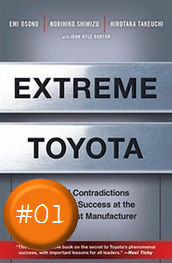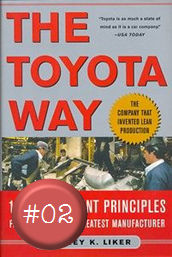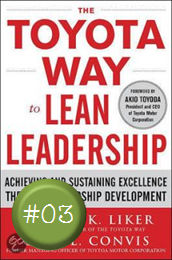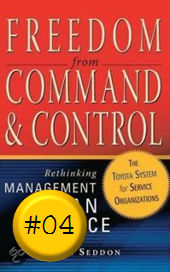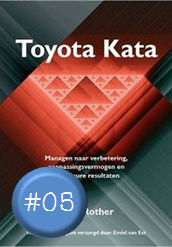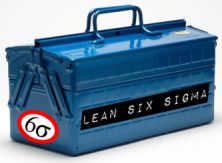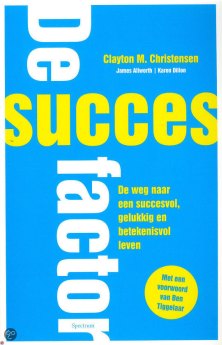Taiichi Ohno had de gewoonte om de managers bij Toyota te coachen door ze tijd te laten doorbrengen op de werkvloer (Gemba) en daar met eigen ogen te zien wat er werkelijk gebeurt. Hij tekende dan met krijt een cirkel op de grond - de zgn. Ohno-cirkel - en liet mensen hier dan vervolgens uren staan om zorgvuldig de gang van zaken te observeren:
![]()
There are many stories about the famous Ohno circle. I was fortunate to speak in person with Teruyuki Minoura, who at the time was president of Toyota Motor Manufacturing, North America. He had learned TPS directly from the master and part of his early education at Toyota was standing in a circle:
Minoura: Mr. Ohno wanted us to draw a circle on the floor of a plant and then we were told, ‘Stand in that and watch the process and think for yourself,’ and then he didn’t even give you any hint of what to watch for. This is the real essence of TPS.
Liker: How long did you stay in the circle?
Minoura: Eight hours!
Liker: Eight hours?!
Minoura: In the morning Mr. Ohno came to request that I stay in the circle until supper and after that Mr. Ohno came to check and ask me what I was seeing. And of course, I answered, (reflecting) I answered, “There were so many problems with the process….” But Mr. Ohno didn’t hear. He was just looking.
Liker: And what happened at the end of the day?
Minoura: It was near dinner time. He came to see me. He didn’t take any time to give any feedback. He just said gently, “Go home.”
Of course, it is difficult to imagine this training happening in a U.S. factory. Most young engineers would be irate if you told them to draw a circle and stand for 30 minutes, let alone all day. But Minoura understood this was an important lesson as well as an honor to be taught in this way by the master of TPS. What exactly was Ohno teaching? The power of deep observation. He was teaching Minoura to think for himself about what he was seeing, that is, to question, analyze, and evaluate.
These days we often depend upon computers to analyze and evaluate data. For example, in a Six Sigma quality improvement initiative, we collect data and run it through our statistical package—correlations, regression, analysis of variance. Some of the results we get are statistically significant. But do we truly understand the context of what is going on or the nature of the problem?
Data is of course important in manufacturing, but I place the greatest emphasis on facts.
—Taiichi Ohno
To Ohno the big difference was that data was one step removed from the process, merely “indicators” of what was going on. What you want to do is verify the on-the-scene facts of the situation. Ohno’s approach was very much like that of a forensic scientist investigating a crime scene.
Bron: The Toyota Way - 14 Management Principles From the Worlds Greatest Manufacturer, Jeffrey Liker








